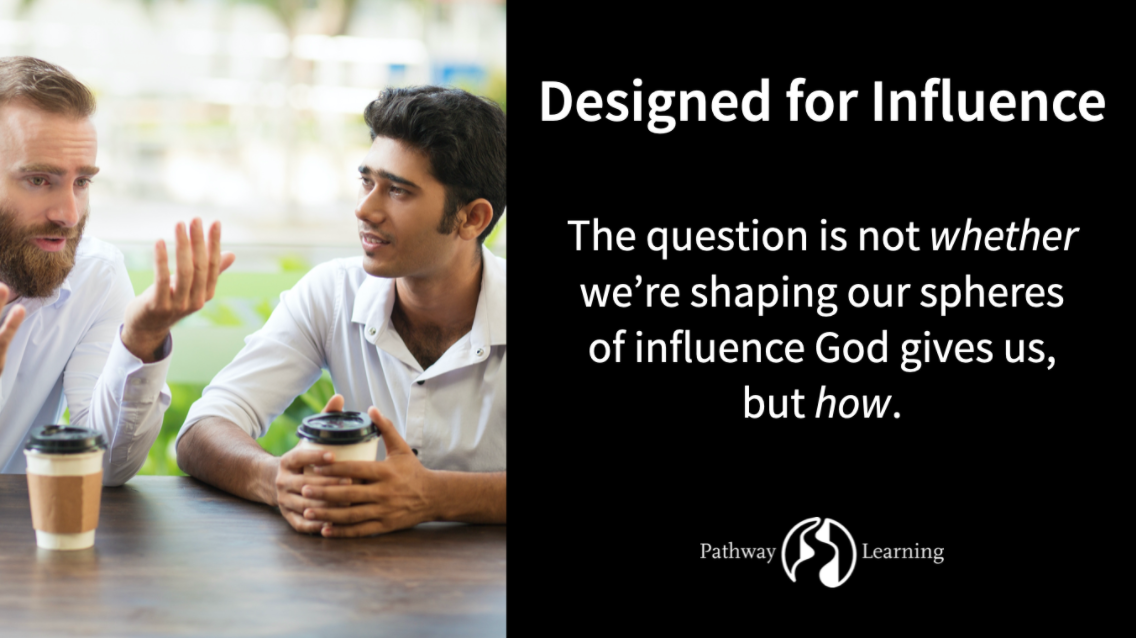Designed for Influence: Faith & Work Series Part 3
By Steven L. Childers
Series: Designed for Influence: Faith and Work Series Part 3
Author: Dr. Steven L. Childers
As we compare and contrast the imagery of Genesis 1 with Genesis 2, we go from a picture of God exercising ultimate sovereignty over all creation, to God exercising his same sovereign rule over just a few people, cultivating a small patch of the earth called a garden, in a real place called Eden.
Although God’s original creation was good, it wasn’t complete. The garden God planted in Eden was a paradise, but it was a newly planted paradise that still needed to be cultivated to reach its full potential. This is why Genesis 2:15 says, “The Lord God took the man and put him in the garden of Eden to work it and keep it.”
From the beginning God created his image bearers to be his developers of creation according to his design and for his purposes. If Adam and Eve had obeyed God and never sinned, their work as God’s coworkers, developing his good creation into an even better one, would have continued for eternity.
The garden paradise God planted was only in the eastern part of Eden. (Gen 2:8) From Eden, God meant for Adam and Eve’s dominion and work to also extend beyond the boundaries of Eden, including regions like the one east of Eden where Cain settled. (Gen 4:16)
Eventually God meant for Adam and Eve’s dominion and work to be like that of kingdom-priests transforming the earth into part of a cosmic sanctuary that brings glory and honor to the King. God said to them, “Be fruitful and multiply and fill the earth [not just the garden paradise] and subdue it.” (Gen 1:28)
How were Adam and Eve to accomplish their work of filling and subduing the whole earth?
According to Genesis 1:28 it involved two things: their procreation and their vocation. Their procreation involved filling the earth with their offspring. Their vocation involved exercising their dominion and subduing the earth by their work and the work of their descendants.
When God told Adam and Eve on the sixth day to be fruitful and multiply, this was not just a command. God was blessing them, similar to how he blessed the animal world on the fifth day. “And God blessed them, saying, ‘Be fruitful and multiply and fill the waters in the seas, and let birds multiply on the earth.’” (Gen 1:22)
So God is saying to Adam and Eve: Be blessed by having many children who will have many descendants for generations who will bear my image and carry out my work. God’s plan was not merely for humans to reproduce physical offspring, but for a man and woman to be in a holy covenant that reproduces holy offspring, set apart as image bearers for the work of God on earth.
Throughout Scripture, God’s pattern is to accomplish his purposes in the world by blessing his people as they reproduce and rule over creation. (Gen 3:15, Gen 12, 15, 17, 2 Sam 7:10, 1 Cor 7:14, Gal 4:4, Heb 2:14) This is why the Psalmist writes:
Behold, children are a heritage from the Lord,
the fruit of the womb a reward.
Like arrows in the hand of a warrior
are the children of one's youth.
Blessed is the man
who fills his quiver with them! (Ps 127:3-5)
Therefore, the purpose of Adam and Eve’s procreation was so that their descendants, the image bearers that filled the earth, would carry out their vocations of subduing the earth. The Hebrew word translated subdue means to bring under one’s control and into one’s service.
So how were Adam and Eve to subdue the earth by carrying out their vocation?
The Bible tells us in Genesis 2:15: “The Lord God took the man and put him in the garden of Eden to work it and keep it.” These two Hebrew words can be translated “to work” (לְעָבְדָ֖ה) and “to keep” (לְשָׁמְרָֽהּ). They can also be translated “to develop and to take care of” or “to cultivate and to preserve or protect.”
God assigns each of us certain gardens or sub-kingdoms or spheres of influence in the world that he expects us to be cultivating and protecting so they can reach their full potential according to his kingdom purposes.
The result of our cultivating and protecting God’s creative order under our influence is called culture. The meaning of culture does not refer to high intellectual or aesthetic pursuits in things like literature and art. We often speak of the elite of a society as being “cultured.”
Instead, culture should be seen as a description of the unique ways that societies live and govern their lives.[1] It includes a society’s language and customs. But culture is more than outward behaviors. It also includes the values that motivate the behaviors, and the beliefs that underlie these motives. And all cultures have worldviews that shape a society’s understanding of reality.
To be someone who is human is to be someone who shapes culture. Because we are image bearers, we cannot not be culture shapers just as we cannot not be worshipers. In our worship the issue is not whether we worship but what we worship. Likewise, in culture, the issue is not whether we shape culture but how.
How did the first humans shape their culture?
In Genesis 1 and 2 we see the first primitive forms of culture emerging, such as the beginnings of language (naming animals), marriage (Adam and Eve), work (gardening), and even worship through poetry (Adam’s praise to God for Eve in Gen 2:23).
Author Richard Mouw speculates that when Adam and Eve took something from nature and turned it into a tool, we see a primal form of technology. When they called the tool a rake, instead of a plant, they created a word and labeling system so all other future tools would not be called rakes. And when they decided they would take turns working, they created the first distribution of labor.
We don’t need to speculate much regarding the first formations of culture. By the time we get to Genesis 4, we find accounts of the founders of three cultural traditions: Jabal, “the father of those who live in tents and raise livestock”; Jubal, “the father of all who play the harp and flute”; and Tubal-Cain, “who forged all kinds of tools out of bronze and iron.”
God designs us in his image so that we will cultivate and protect all the spheres of life he places under our influence, in order to accomplish his will on the earth. The reason we long to make a difference in the world is because God designed us to.
We are designed to glorify and enjoy God by cultivating and keeping things that are true, good, and beautiful. We’re meant to promote truth, nurture goodness, and create objects of beauty.
We’re not designed to tolerate injustice and poverty, to be content with corruption and disease, or to suppress creativity and expression. This is why we’re compelled to fight back against all the brokenness in the world until all things are made new.
This is what it means to be fully human and flourish according to God’s design.


